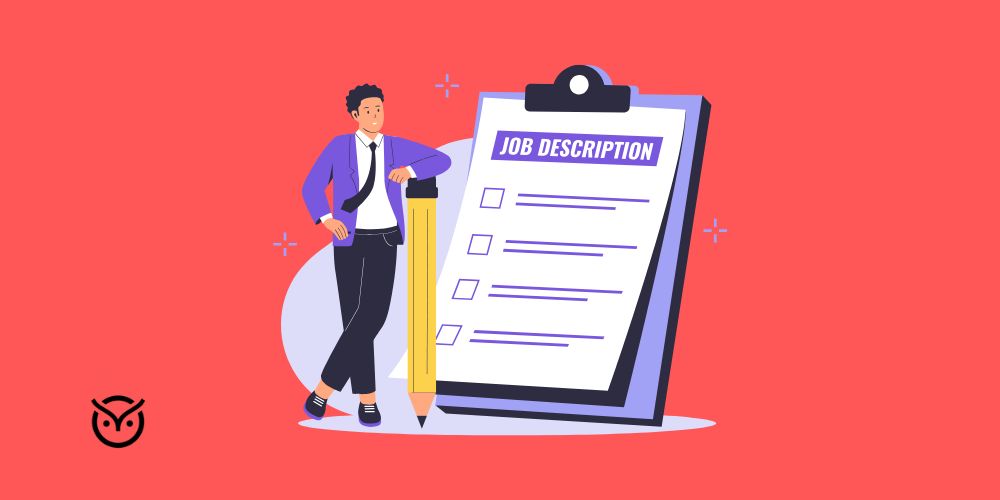
Backend EngineerJob Description
Everything recruiters need to write, post, and fill a backend engineer role—fast.
Job Description Sample
Need a clear, ready-to-use job description? Copy, paste, and hire faster.
Job Title: Backend Engineer
Location: Remote/Hybrid/On-site
Type: Full-time
About the Role:
We are seeking a talented Backend Engineer to join our engineering team and help build robust, scalable server-side applications. You will work closely with cross-functional teams to design and implement high-performance APIs, optimize database operations, and maintain critical infrastructure. This role offers opportunities to solve complex technical challenges while contributing to our platform's architecture and growth.
Key Responsibilities:
- Design and develop scalable backend services and APIs
- Optimize database schemas and query performance
- Implement security measures and data protection protocols
- Collaborate with frontend teams on API integration
- Write clean, maintainable, and well-documented code
- Debug production issues and implement fixes
- Participate in code reviews and technical discussions
- Monitor system performance and implement improvements
Perks:
- Competitive salary and equity package
- Comprehensive health, dental, and vision coverage
- Flexible PTO and remote work options
- Professional development budget
- 401(k) matching
Backend Engineer Responsibilities
Hiring a backend engineer? Here's what you can expect them to handle:
- Architect and build scalable backend systems and microservices
- Design and optimize database schemas and queries
- Implement RESTful APIs and integration points
- Ensure system security and data protection
- Maintain and improve existing codebase
- Collaborate with DevOps on deployment processes
- Monitor system performance and troubleshoot issues
- Mentor junior developers and contribute to team growth

Qualifications to Be a Backend Engineer
Here's what a solid candidate typically brings to the table:
 Bachelor's degree in Computer Science or related field
Bachelor's degree in Computer Science or related field 3+ years of backend development experience
3+ years of backend development experience Strong proficiency in at least one backend language
Strong proficiency in at least one backend language Experience with relational and NoSQL databases
Experience with relational and NoSQL databases Knowledge of API design and implementation
Knowledge of API design and implementationBackend Engineer Prerequisites
Before you even think of hiring, make sure your candidates have:
 Understanding of cloud services and infrastructure
Understanding of cloud services and infrastructure Experience with version control systems
Experience with version control systems Knowledge of security best practices
Knowledge of security best practices Strong problem-solving abilities
Strong problem-solving abilities Excellent communication skills
Excellent communication skillsBackend Engineer Hard Skills
The “must-haves” on every recruiter's checklist:
 Programming Languages: Python, Java, Node.js
Programming Languages: Python, Java, Node.js Database Technologies: SQL, MongoDB, Redis
Database Technologies: SQL, MongoDB, Redis Cloud Platforms: AWS, GCP, Azure
Cloud Platforms: AWS, GCP, Azure API Development: REST, GraphQL
API Development: REST, GraphQL System Design: Microservices, Distributed Systems
System Design: Microservices, Distributed Systems Security: OAuth, JWT, Encryption
Security: OAuth, JWT, Encryption Testing: Unit Testing, Integration Testing
Testing: Unit Testing, Integration Testing Performance Optimization: Caching, Load Balancing
Performance Optimization: Caching, Load BalancingBackend Engineer Soft Skills
Tech skills get them in the door—soft skills help them stick around.
 Problem-solving and analytical thinking
Problem-solving and analytical thinking Clear communication and documentation
Clear communication and documentation Team collaboration and mentorship
Team collaboration and mentorship Time management and prioritization
Time management and prioritization Adaptability to new technologies
Adaptability to new technologies Attention to detail
Attention to detail Project management
Project management Critical thinking
Critical thinkingBackend Engineer Salary by Experience Level
Frequently Asked QuestionsAbout Backend Engineer Hiring
Backend Engineers specialize in server-side architecture and databases, while Full Stack Engineers work across both frontend and backend. Backend Engineers typically have deeper expertise in system design and database optimization.
Use system design interviews with real-world scenarios. Have candidates explain their approach to scaling, data modeling, and handling potential failure points.
Prioritize database expertise for data-heavy applications and API design for service-oriented architectures. The choice depends on your specific technical stack and business needs.
Look for poor error handling, lack of testing, inadequate documentation, and disregard for security best practices. These indicate potential issues with code quality and engineering practices.
Start with 2-3 Backend Engineers per product team to ensure proper coverage and knowledge sharing. Scale based on system complexity and development velocity needs.
Tools and Programs Backend Engineer Use
Here's what their digital toolbox might look like:
Version Control
Databases
Cloud Services
CI/CD
Monitoring
Containerization
API Testing
Documentation
Job Description Examples

Related Articles




